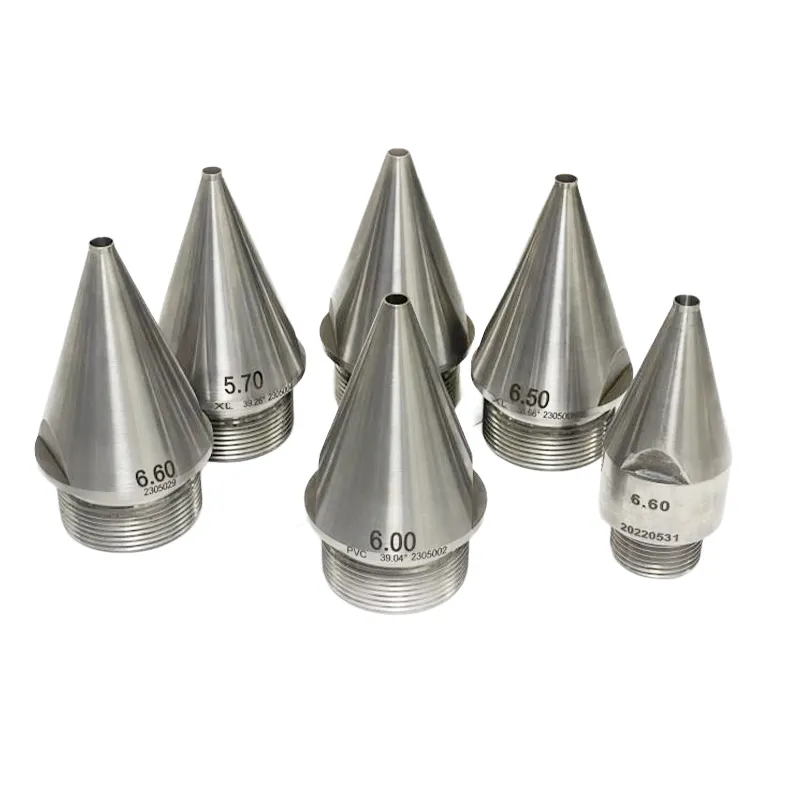Selecting the Right Die for Pipe Extrusion: A Comprehensive Guide
pipe extrusion die
Pipe extrusion is a widely used manufacturing process for creating pipes of various shapes and sizes. One of the critical components in this process is the die, which plays a pivotal role in shaping the molten plastic into the desired pipe profile. The choice of die is essential to achieve the desired product specifications. In this article, we will explore the types of dies commonly used in pipe extrusion and factors to consider when selecting the right die for your application.

1. Common Types of Dies for Pipe Extrusion:
a. Annular Die (Spider Die): This die is a popular choice for manufacturing round pipes. It consists of a circular opening, and the plastic melt flows through this opening to form the pipe shape. Annular dies are versatile and suitable for producing pipes of various diameters.
b. Crosshead Die: Crosshead dies are used for creating pipes with multiple layers or co-extrusion. They have an outer and inner die, which allows for the simultaneous extrusion of different materials, producing pipes with distinct layers. Crosshead dies are often employed in applications where special properties, such as UV resistance or barrier properties, are required.
c. Pin Die: Pin dies are used for producing pipes with specific internal structures, such as corrugated pipes. They contain a series of pins or mandrels inside the die to shape the internal structure of the pipe. These dies are ideal for applications where structural rigidity or flexibility is crucial.
2. Factors to Consider When Choosing a Die:
a. Pipe Geometry: The die must match the desired pipe geometry. Consider the shape, diameter, and wall thickness of the pipe you intend to produce.
b. Material Compatibility: The die material must be compatible with the plastic or polymer being extruded. Factors like temperature and chemical resistance should be taken into account.
c. Production Volume: The choice of die may vary depending on your production volume. For high-volume production, dies with optimal flow design and durability are preferable.
d. Cooling and Heating: Some applications may require dies with built-in cooling or heating systems to control the temperature of the extruded material.
e. Tolerance and Quality: Precision is crucial in pipe extrusion. Ensure that the die provides the required dimensional accuracy and surface finish.
f. Die Design: The design of the die's flow channels, land length, and land angle significantly affects the final product. It's essential to work with an experienced die designer to optimize these parameters.
g. Budget: Your budget will play a role in the die selection. While high-precision custom dies may be more expensive, they can provide better product quality.
In conclusion, the die used in pipe extrusion die is a critical component that directly impacts the quality, efficiency, and functionality of the final product. Selecting the right die involves careful consideration of the pipe's geometry, material compatibility, production volume, cooling/heating requirements, and budget. With the proper die, you can ensure that your pipe extrusion process yields high-quality pipes that meet your specific needs.
 English
English Español
Español Português
Português русский
русский français
français 日本語
日本語 Deutsch
Deutsch Tiếng Việt
Tiếng Việt Nederlands
Nederlands ไทย
ไทย Polski
Polski 한국어
한국어 Svenska
Svenska magyar
magyar Malay
Malay বাংলা
বাংলা Dansk
Dansk Suomi
Suomi हिन्दी
हिन्दी Pilipino
Pilipino Türk
Türk Gaeilge
Gaeilge عربى
عربى Indonesia
Indonesia norsk
norsk čeština
čeština Ελληνικά
Ελληνικά Українська
Українська नेपाली
नेपाली Burmese
Burmese български
български ລາວ
ລາວ Latine
Latine slovenský
slovenský Lietuvos
Lietuvos

Changzhou Shen Litong Mould invites you to visit the exhibition
From August 27th to 29th, 2025, at SHANGHAI NEW INTERNATIONAL EXPO CENTRE,the 12th China International Wire&Cable Industry Exhibition (Hall E1, G21), Shen Litong Dies sincerely invites you to visit, exchange and offer guidance, and jointly explore new developments in the industry.
Read MoreOptimizing Your Wire Drawing Process: Selecting the Ideal Die Configuration for Material & Application
The wire drawing process is a critical metal forming operation that reduces the cross-section of wire by pulling it through a series of progressively smaller dies.
Read MoreCommon Wire Surface Defects: Causes and Die-Related Solutions
Abrasions or Built-up Edges (BUE): Accumulation of wire material (e.g., copper, aluminum) on the die surface, which then scratches subsequent wire.
Read More